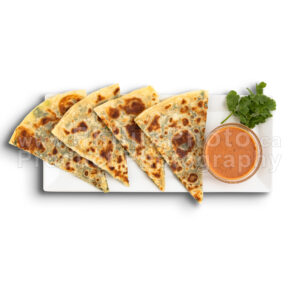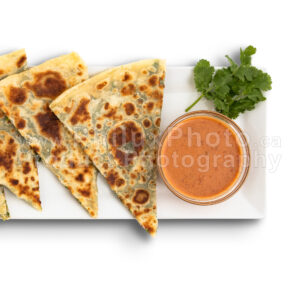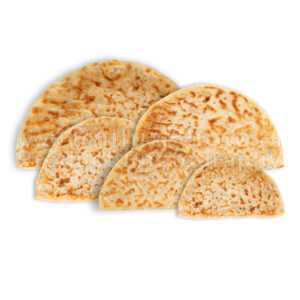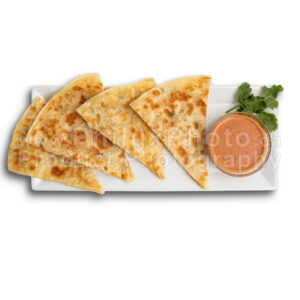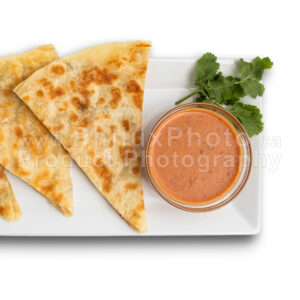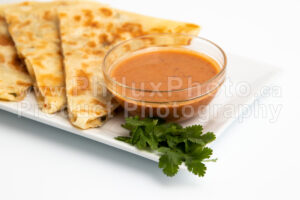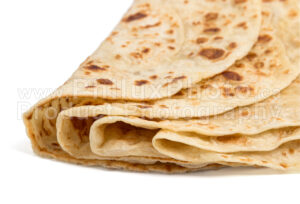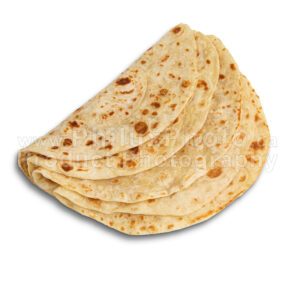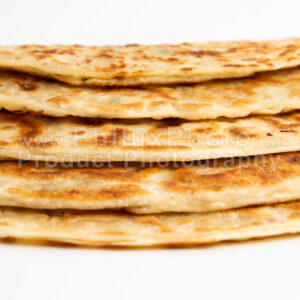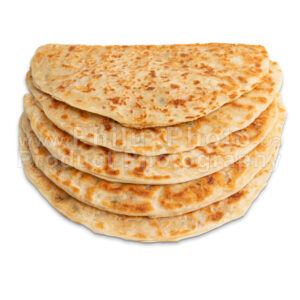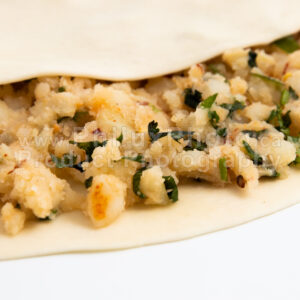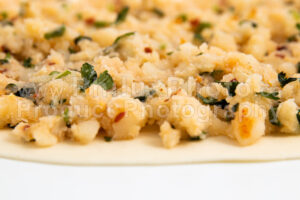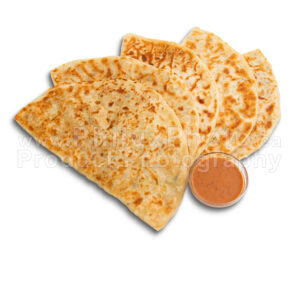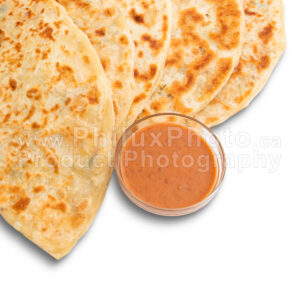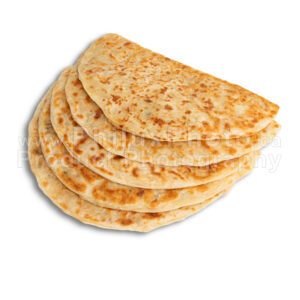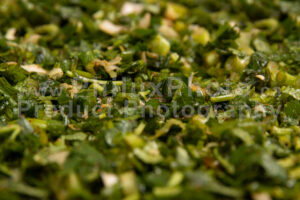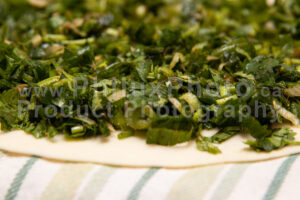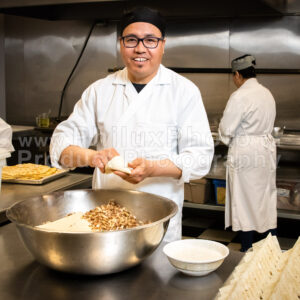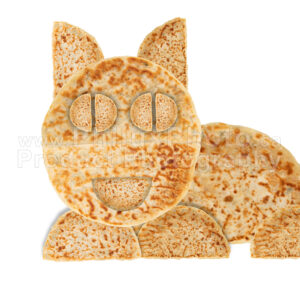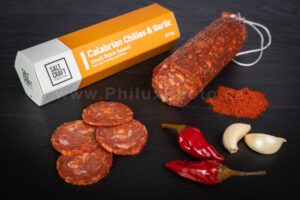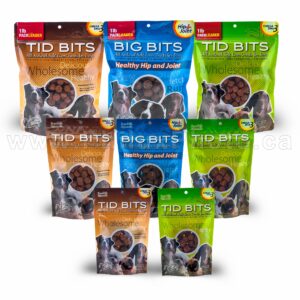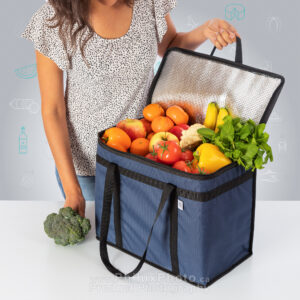Chapati and Bolani Food Photography
Chapati and Bolani are popular food items in different cuisines.
Chapati is a traditional unleavened flatbread commonly consumed in Indian cuisine. It is made from whole wheat flour, salt, and water. The dough is rolled into thin discs and cooked on a hot griddle or tawa. They are often served with curries, dal (lentil soup), or other dishes. It is a versatile staple and can be enjoyed as a main accompaniment or used to wrap various fillings to make rolls or sandwiches.
Bolani is a type of stuffed flatbread originating from Afghanistan. It is made by rolling out a thin dough and filling it with a mixture of ingredients such as potatoes, leeks, spinach, or lentils. The filled dough is then folded and cooked on a griddle or fried until it becomes crispy and golden. Bolani is typically served as an appetizer, snack, or side dish. It is often accompanied by yogurt sauce or chutney for dipping.
Both chapati and bolani are popular for their simplicity, versatility, and ability to be paired with a variety of dishes. They are enjoyed in different regions and have their unique flavors and preparations, making them delightful additions to meals.
Food Photography – Ingredients
Good food photography typically involves several key elements to make the food look appealing and appetizing.
Lighting: Proper lighting is crucial in food photography. Soft light is a first setup to go, but hard light is a popular trend.
Composition: the placement and the balance of items is important, the center of the image is not always the best.
Styling: is paramount, and it’s an established job: food stylist. Not every project can afford one but every cook has must have a skill for presentation.
Background: should complement and enhance the food. Simple is great, as it should not compete for attention with the food.
Props and utensils: while this project was rather simple, it doesn’t hurt to have appropriate props and utensils that suggest serving style.
Focus and depth of field: you may be tempted to use it, it could be a great ingredient of food photography but not a must. It’s in fashion for portraits, always has been, but not for food.
Editing and post-processing: enhance the images but over-editing can be an easy pitfall. Usually it’s removing crumbles, fixing some funny spots, but you have to know when to stop.
The ultimate goal of food photography is to make the viewer crave the food and capture its essence.

